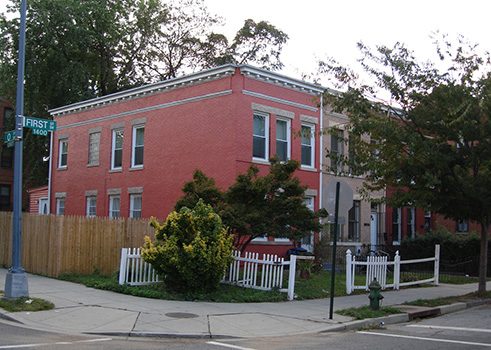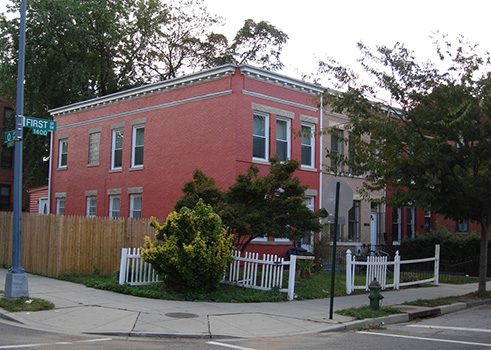Wenig Rowhouses 1400, 1402, 1404 First Street, SW
German Roots in DC
-
Rowhouses designed by Julius Wenig in SW Washington. Built 1907. October 2010. -
Rowhouses designed by Julius Wenig in SW Washington. Built 1907. October 2010.
As noted in a study prepared by the University of Maryland Historic Preservation Studio for the DC Preservation League, "This group of three brick buildings was built in 1907 by John Schlorb, a first-generation American who was born in the District of Columbia to German immigrants. ... Schlorb was a butcher who worked at the Center Market. After construction of the houses, valued at $7,000, Schlorb lived in 1400 and rented the other two properties. Ten years later, a relative, William Schlorb, also a butcher, owned 1400 while John Schlorb lived in 1402 and rented 1404 to Abraham Schlain, a Russian immigrant. While modest in size, this group of structures is a coherent expression of a classic urban building type, the rowhouse. The occupation and ethnicity of the owner represents the development pattern of this area in the late 19thcentury, as European immigrants settled in the Southwest portion of the Nation’s Capital and formed a multi-ethnic working class neighborhood. Evidence of this development pattern elsewhere in the Southwest was largely destroyed by the urban renewal program of the mid-20th century. This group of houses is one of Southwest's few remaining examples of this type."

